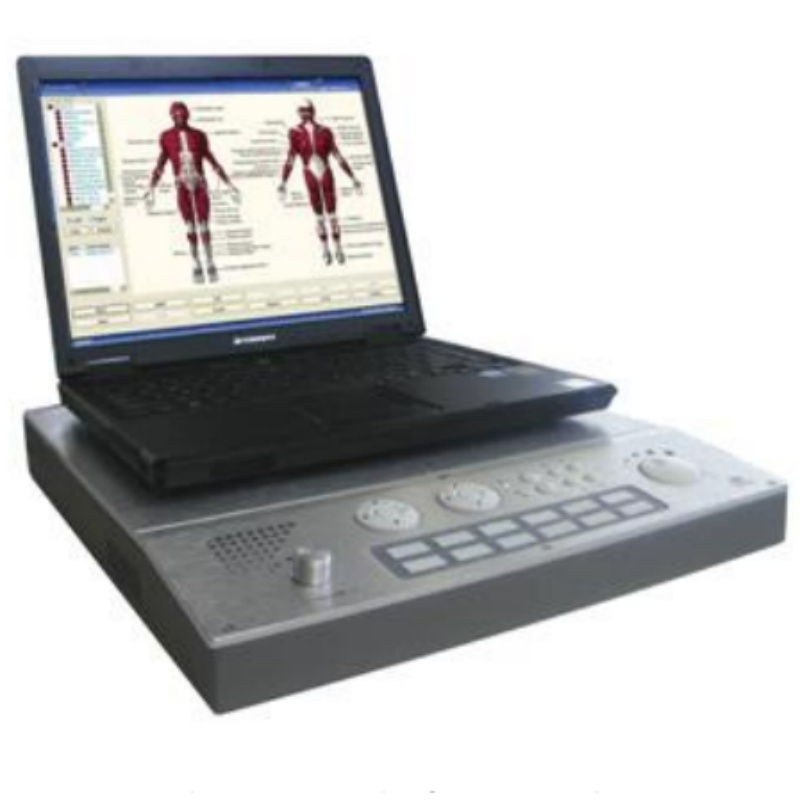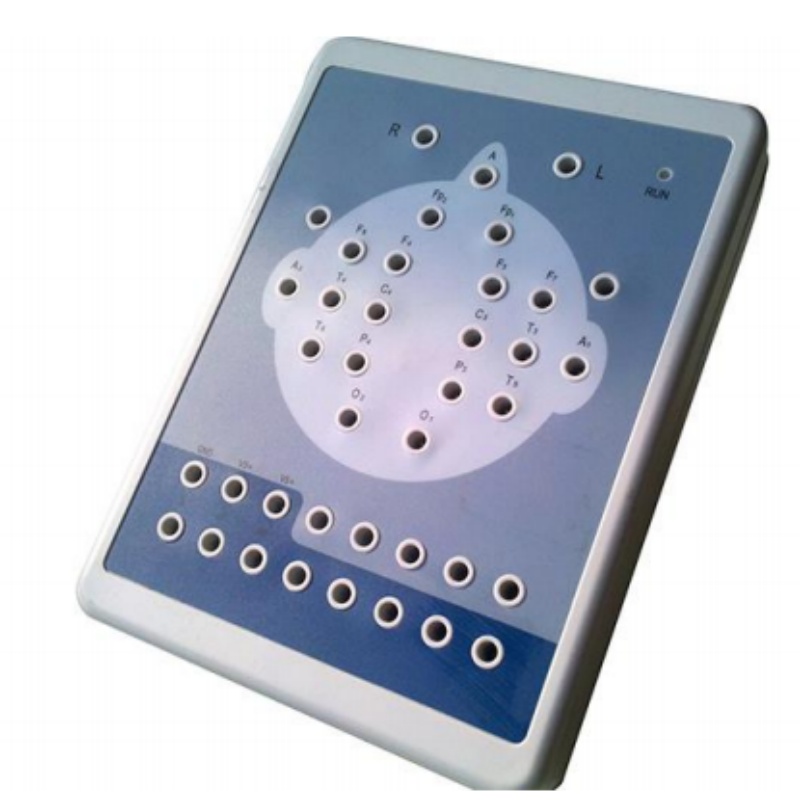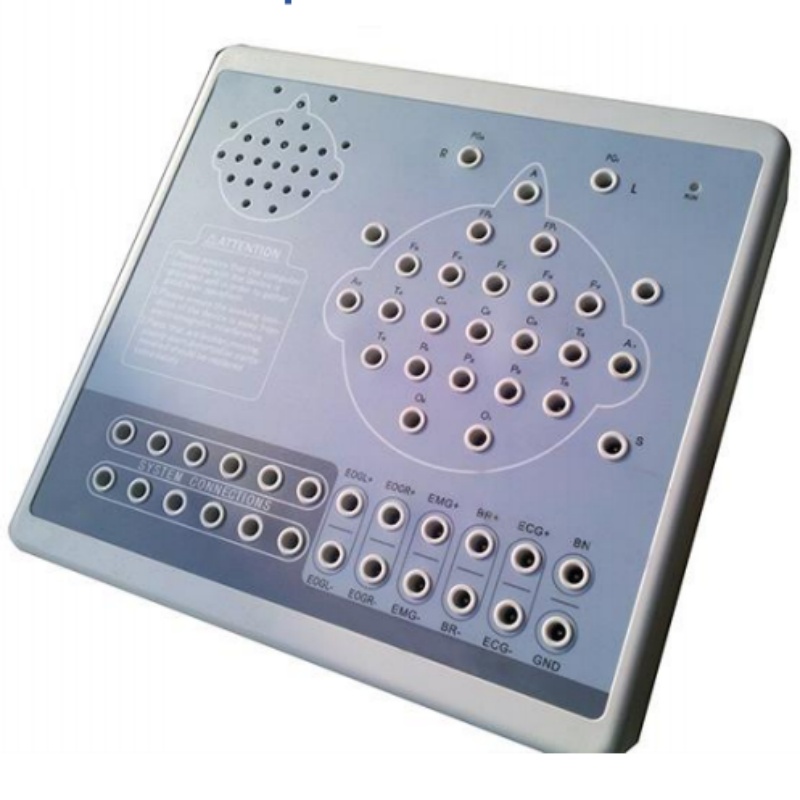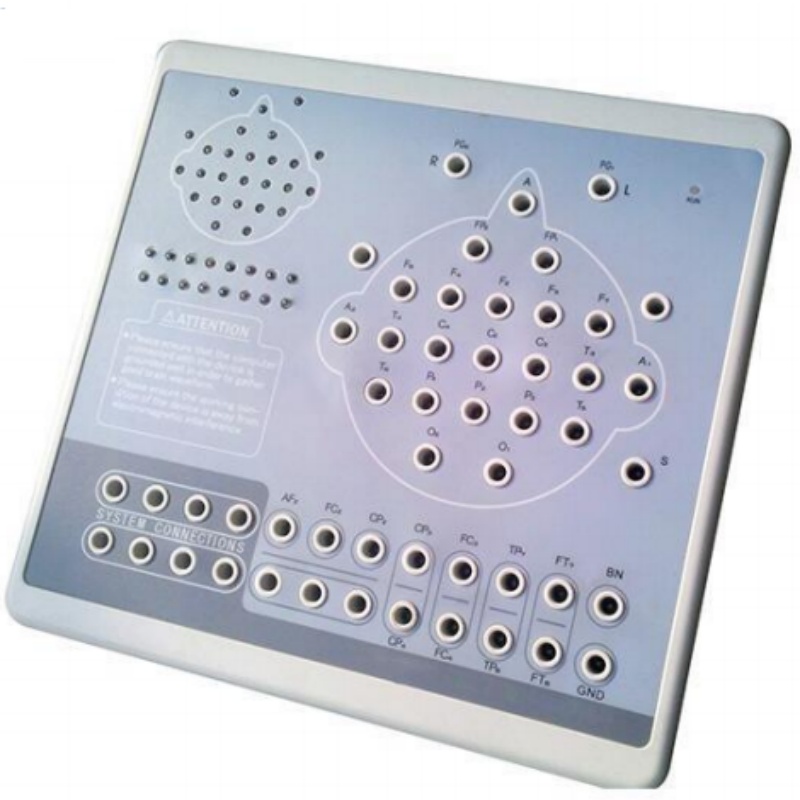

; ?>)
General electromyogram (EMG),Sensory nerve conductor velocity (SCS),motor nerve conductor velocity (MCS), Fwave, HRe-flex, Blink Reflex, Repetitive nerve stimulation (RNS), Brainstem auditory evoked potential (BAEP),Visual evoked potential (VEP),Somatosensory evoked potentials(SEP). Computer is optional.
| PARAMETER | SPECIFICATION |
| Computer part | |
| CPU | Intel Pentium III (more than 800MHz) |
| EMS memory | More than 256M |
| HD | More than 40G |
| CD driver | CD-ROM or higher configuration |
| I/O interface | More than USB2.0 interfaces |
| Operating system | Windows 7,vista,XP 62bit,32bit |
| Laser printer | Yes |
| Main system part | |
| A/D conversion resolution | 16Bit |
| Sampling ratio | 200kHz |
| Analysis time | 5-5000ms |
| Amplifier part | |
| Channel | 4 |
| Sensitivity | 0.05µV-20mV/Grid |
| CMRR | ≥100dB |
| Filter frequency | Low-pass:1Hz~3000Hz (-3dB) |
| High-pass:10Hz~20000Hz(-3dB) | |
| Gain amplifies | 25 times~400000 times |
| Stimulator part | |
| Constant current | 0.2-100mA |
| Pulse width | 50-1000µS |
| Stimulation Frequency | 1Hz~5Hz |
| Stimulation type | Single or continuous stimulation |
| Protection | Short circuit and overloading protection |
| Auditory stimulator | |
| Stimulation waveform | 40Hz short, Sound stim |
| Stimulation polarity | Non-dense wave, dense wave and alternant wave |
| Sound intensity | 40-120dB (5dB per level) |
| Frequency of 40Hz carrier wave | 500-8000Hz |
| Visual stimulator | |
| Adopts CRT display whole size | Not less than 200mmx200mm |
| Mode | Tessellation, horizontal bar and vertical bar |
| Stimulation view | All-view, half-view and quarter-view |
| Resolution | 3×4,6×8,12×16 ,24×32,48×64 |
| Flash stimulator | All quench, left light, right light, L&R light |
1.System self-checking function
System will check each part of hardware can work normally when it is powered on to ensure patient safe.
2.Case database management system
The function in this module include: add, delete, modify query, import and export cases information. In addition, the system also provides advanced and intelligent search function for case
3.Projects select
The module is the bridge connection case database and checking project. It provides information with graph and characters, which is convenient for user to select test part and project.
4.Impedance test
To achieve optimal test effect, firstly open impedance test function to record that the impedance of body surface complies with condition which is less than SK.
The detailed test projects are showed as below:
5.1 EP system: including SEP, VEP (which contains EP-mode switch and flash) and BAEP.
5.2 NCS
5.2.1 MCS
The system can analyses the collection waveform and adjust baseline automatically, and nerve conduction velocity in two nerve segments and latency can be calculated.
5.2.2 H Reflex
H-wave latency ,H-wave amplitude and H/M rate can be calculated.
5.2.3 SCS
Get bigger signal noise ration (SNR) and strong anti-interference capability by lesser superimposed waveform. And nerve conduction velocity in tow nerve segments and latency can be calculated.
5.2.4 F Wave
This Window displays two waveform (M wave in left and F wave in right),It can calculate F-wave latency , F-wave Amplitude, F-Wave occurrence, F/M amplitude rate and F-wave conduction velocity.
5.2.5 RNS
Many Repetitive stimulation checks can be done in one test, and stimulation waveform amplitude, amplitude decremental percentage, waveform area decremental percentage can be calculated.
5.2.6 Blink Reflex
Dual-channel collection can record trigeminal signal from two sides.
5.3 Standard EMG system
This system reduces baseline drift by superimposing eight EMG waveforms, real time analyse motor unit potential and interference phases.
Copyright © 2001-2025 ARI Medical Technology Co., Ltd. - ARI Group. All Rights Reserved.
Copyright © 2001-2025 ARI Medical Technology Co., Ltd. - ARI Group. All Rights Reserved.



